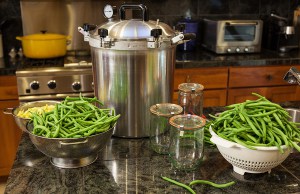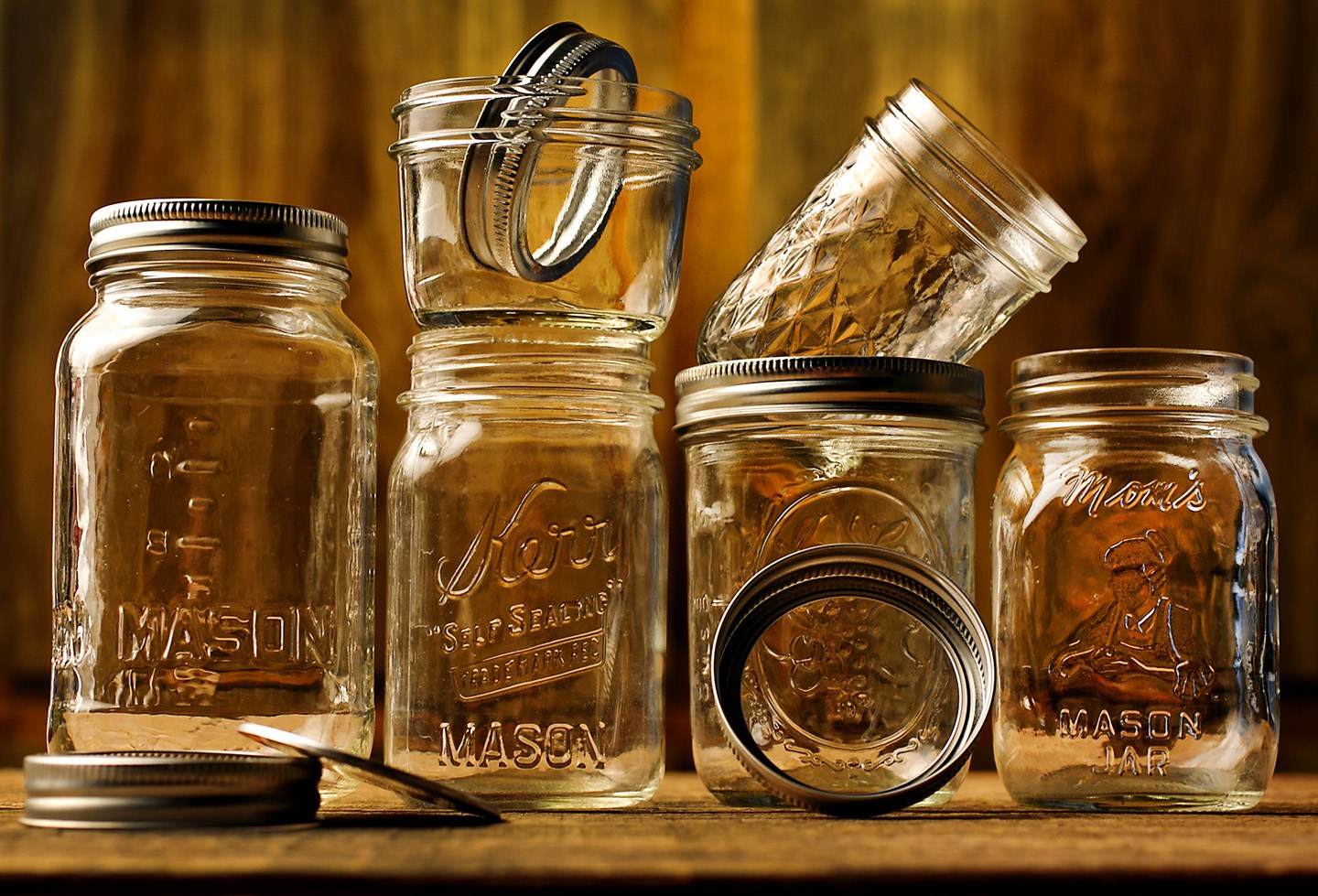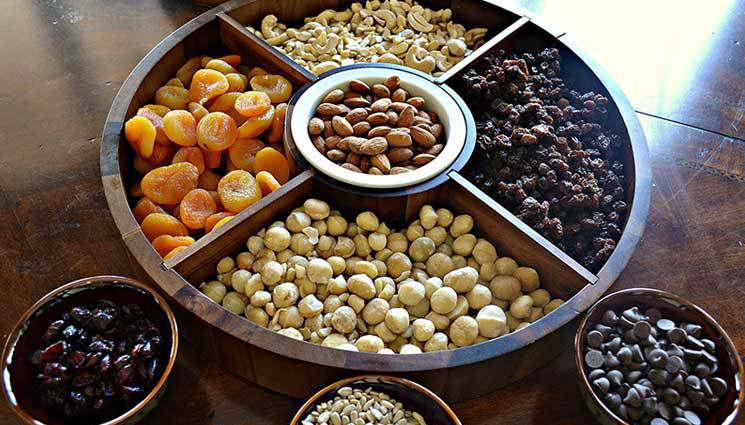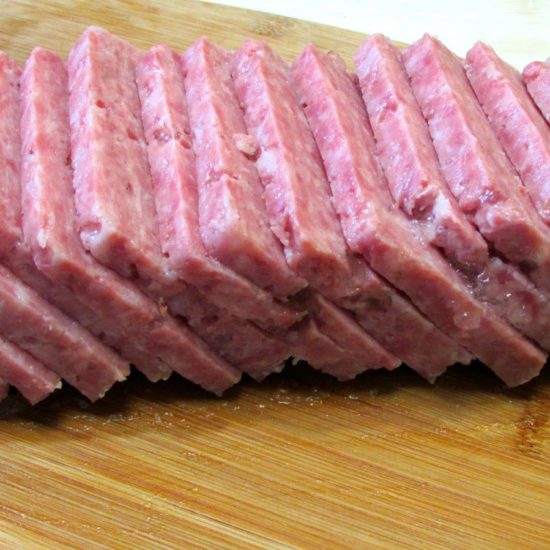
One evening last week, I decided to make my family an apple pie. We had canned apples from last fall and I still had about six jars left in the pantry. “Perfect!” I thought as I rolled out my pie crust. I opened the first jar and dumped the apples in, but since I prefer a deep-dish pie, I needed one more jar to fill it to the brim. Alas, to my dismay, I opened the second jar and I shrieked in horror because the lid wasn’t sealed. Fearing the dreaded botulism spore, I opened the third. Now with a more critical and leery eye, I decided these apples looked weird and possessed an odd brown color. Out they went. Under the same scrutiny, unfortunately for my pantry, the fourth and fifth met the same fate. Luckily, the sixth and final jar passed the test and my family’s craving for a sugar high and “circumferential” celebration was satisfied. I baked the pie, and we all survived.
This occurrence caused me to consider the peril that could be lurking in our pantry. I realized the seriousness of botulism and how little knowledge I possessed on the topic. This concerned me greatly because I have a pantry full of canned foods that were either purchased or I had put up myself. After some research, I verified the fact that canned foods, the kind in actual metal cans not jars, affected with botulism will bulge and rust. However, jars of food from home canning or some metal cans show zero signs of botulism. What is even more frightening is that once botulism is contracted, you inconveniently may require medical attention to survive. Treatments such as respirators, feeding tubes, and IVs may be necessary for survival. How many preppers have a respirator on hand and the medical know-how to treat food poisoning such as botulism?
The Facts
Botulism or Clostridium botulinum is found in soil and untreated water throughout the world. It produces spores that survive in improperly preserved or canned food, where they produce a toxin. When eaten, even tiny amounts of this toxin can lead to severe poisoning.
C. botulinum is anaerobic: Oxygen kills it. That’s why, if the spores are already in the food, home-canned foods can be particularly dangerous. The canning process depletes oxygen, and if a high-enough temperature is not maintained for long enough during the cooking and canning process, the spores can survive, and they’ll feed on the food until it’s eaten … by humans. If you assume the bacteria could not be possibly living in that jar of green beans that came from your grandmother’s garden in 1933, think again. Microbiologists have found dormant bacterial spores that were thousands of years old. This is serious, so don’t have and delusions about your iron stomach or intestines of steel.
There are two types of food-borne botulism: The type that affects adults and the type that babies contract from eating honey before they are one year of age. Simply put, there are traces of botulism in the honey that are taken care of by adult stomach acid, but not yet developed in infants under a year.
As of right now in the U.S., there is an average of 145 cases of botulism annually. 15% are from food, 65% are contracted in infants, and 20% are wound-related. For this post, I am focusing solely on the food-borne type. Of the 15% contracted poisoning from food, almost all the cases derive from home canning. Rarely does anyone sicken from commercially canned goods because the cans are required to undergo a “botulinum cook” at 121 °C (250 °F) for 3 minutes. Home pressure cookers can only reach 240 °F. The culprits are generally not high acid foods, but low acid edibles such as beets, green beans, corn, and asparagus. It is also likely found in cured pork and ham and smoked or raw fish.
Another source of poisoning to be wary of comes from oils that have been infused with garlic, pepper, or other vegetation because botulinum bacteria may seep into the oil from the vegetation. Pay close attention to dates on the products and once opened, refrigerate.
Normal symptoms of food-borne botulism usually occur between 12–38 hours after consuming the botulinum toxin. However, they can occur as early as 6 hours or as late as 10 days after.
Normal symptoms usually include dry mouth, double and/or blurred vision, difficulty swallowing, muscle weakness, drooping eyelids, difficulty breathing, slurred speech, vomiting, urinary incontinence and sometimes diarrhea. These symptoms may continue to cause paralytic ileus (bowel obstruction) with severe constipation and will lead to body paralysis. The respiratory muscles are affected as well, which may cause death due to respiratory failure. These are all symptoms of the muscle paralysis caused by the bacterial toxin.
No Worries! I Am A Clean Freak!
Even if you are the most sanitary person on the planet and vacuum yourself out of your house every day please consider the following from http://www.pickyourown.org/botulism.htm
“Clostridium botulinum bacteria exist either as spores or as vegetative cells. The spores, which are dormant and comparable to plant seeds, can survive harmlessly in soil and water for many years. When ideal conditions exist for growth, the spores produce vegetative cells which multiply rapidly and may produce a deadly toxin within three to four days of growth in an environment consisting of:
[list style=”1″ underline=”1″]
- a moist, low-acid food (like meats, almost all vegetables – including peppers, green beans, corn, etc.)
- a temperature between 40° and 120°F
- less than 2 percent oxygen (which occurs in any jar of canned food)
[/list]
While the incidence is fairly rare, the death rate is high if not treated immediately. Prevention is obviously extremely important. Home canning should follow strict hygienic recommendations to reduce risks. Pressure canners should be used for all low-acid foods, but home pressure canners only reach 240 F, not 250 like commercial equipment, and are not hot enough to kill ALL of the spores. It is the destruction of the active bacteria, and destruction or substantial reduction in numbers of spores along with the creation of an environment that is less conducive to the growth of the remaining spores, that ensures safety.
The botulism spores can only be killed by the high heat which can be obtained in a pressure canner. Water bath canners cannot do this. The toxin (that is produced in anaerobic conditions) can only be destroyed by boiling; so if there is any doubt, boiling the food for 20 minutes after opening the jars adds an additional measure of safety, although this is not always practical. Colorado State University says:
As an added precaution, boil all home-canned vegetables and meats without tasting for 10 minutes plus one minute per 1,000 feet above sea level (15 minutes at 5,000 feet). Boil home-canned spinach and corn 20 minutes before tasting. If the food looks spoiled, foams or has an off odor during heating, discard it.
The processing times in recipes in PickYourOwn.org are from the USDA and Ball Blue Book, and ensure destruction of the largest expected number of heat-resistant microorganisms in home-canned foods. Properly processed, home canned food will be free of spoilage if lids seal and jars are stored below 95°F. Storing jars at 50° to 70°F also enhances retention of quality.
Can’t I simply heat the jars in a water bath canner for a very long time or add acid (vinegar or lemon juice)?
Botulism spores are very heat resistant. They may be destroyed at boiling water temperatures, but extremely long times are required. The higher the canner temperature, the more easily and quickly they are destroyed.
Low acid foods
Therefore, all low-acid foods should be sanitized at temperatures of 240° to 250°F, attainable with pressure canners operated at 10 to 15 PSI. PSI means pounds per square inch of pressure as measured by a gauge. At these temperatures, the time needed to destroy bacteria in low-acid canned food ranges from 20 to 100 minutes. The exact time depends on the kind of food being canned, the way it is packed into jars, and the size of jars.
Acid foods
The time needed to safely process low-acid foods in a boiling water canner ranges from 7 to 11 hours. Such long processing times are not researched and are not recommended. Losses in nutrients and quality would be unacceptable. The time needed to process acid foods in boiling water varies from 5 to 85 minutes.
In addition to the acidity of the food and the heat resistance of the microorganism, the time required for sufficient heat to penetrate all parts of the food in the jar must be considered. Heat is transferred from the outside of the jar through the food and thus is affected by:
The size and shape of the container. Smaller jars heat faster than wider or taller jars. The USDA no longer recommends jars larger than a half-gallon, and typically jars must be 1 quart or smaller.
Amount of liquid. Food containing a large amount of free liquid heats much more quickly than a more solid product.
Piece size. Smaller pieces of food (corn, peas) heat much more quickly than large chunks.
Amount of fat. Fat insulates the food and slows heat transfer. Most canning recipes require little or no added fats or oils.
The type of heating medium being used. Wet steam heats faster than dry air.
The many factors involved make it impossible to estimate the correct processing conditions for any food product. This is especially true for items which are mixtures of food with differing water content, piece size, fat content, or acidity as well as types and numbers of microorganisms present. The establishment of a correct, safe process requires laboratory research by trained scientists. “
Steps to Reduce Risk
- If in doubt, throw it out! Remember, botulism can only be detected 100% in a laboratory. Don’t take any unneeded risk.
- Bulging cans or jars with bulging canning lids should be thrown out immediately and wash your hands after contact.
- If food is foamy or has a bad odor throw it out.
- Do not decide you are Martha Stewart some weekend and invent your own recipe assuming that adding acidic ingredients such as vinegar or lemon juice or other acids will render your canned food safe. There is hope for your creative side, however! Playing around with spice amounts is usually fine because it does not affect the acidity levels.
- Avoid canning pumpkin or pumpkin butter because home pressure cookers cannot heat the jars to a temperature required to render such foods safe.
- Be careful of who you accept canned foods from. If your Aunt Dorothy decided to can for the first time to save a bundle on Christmas gifts, but she has a tendency to leave her house without a stitch of clothing on, I would thank her graciously and pitch it in the trash as soon as possible.
A Good Source for Recipes
Use only time- tested recipes that have been in your family for years. And of course, recipes form Ball Blue Book, USDA, local agricultural and University Extension services, and PickYourOwn.org are tested approved.
Anyone stocking up on food should consider the safety of their stores and clear out and dust off the shelves once in a while. Being prepared and providing safe, healthy food to your family is the key to any survival plan. Considering the ramifications of contracting food poisoning such as Botulism, checking and ensuring the quality of your preps is vital.




















